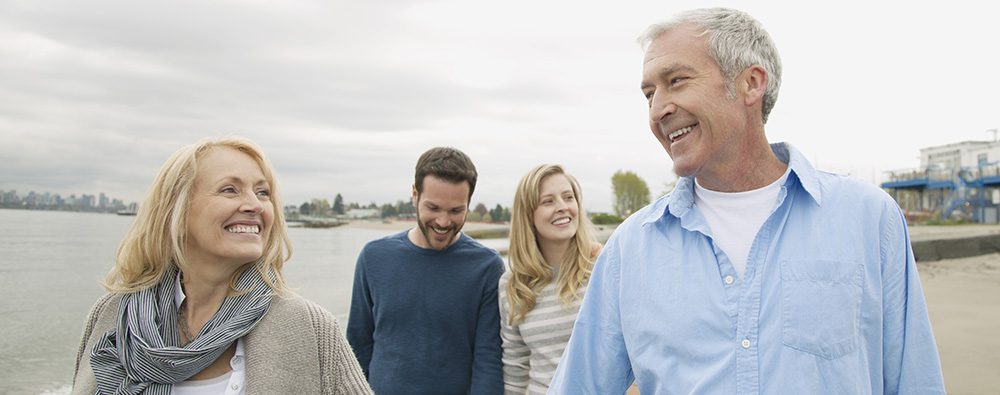Maturitus Journal, a widely read publication in the United Kingdom, recently published an article on aging baby boomers. The piece explored what people in their late 60s expected when it came to their future care needs. The researchers chose this group because the participants were right on the cusp of moving from caregiver to care receiver. An interesting pattern emerged as the data came together—one that challenges our current model of senior care.
- Over 90% of the study members at age 68-69 had at least one adult child and 44% lived less than five miles from their closest adult child
- Over 75% of study members with a living child expected to be cared for by their daughter or son in the event they needed help due to sickness, frailty, or disability
- Only 11% of those with a living child expected to be cared for by paid professionals
Essentially, the study showed that the majority of participants expected their adult children to care for them when their health began to require some sort of support.
This finding is interesting to me because as I go about my work, I often hear the sons and daughters of my residents echo the words, “I don’t ever want to be a burden to my kids”. Isn’t that what every aging parent thinks? And yet, the study seems to show just the opposite: People in their late 60s (i.e. these same sons and daughters) are expecting that their kids will take care of them when the time comes. It appears to me that the survey results and my decades of personal experience as a licensed nursing home administrator are at odds.
Even though it seems like there’s a contradiction, something else is going on. To understand what that is, we need to look at two things, that when taken together, reveal a dynamic that resolves the contradiction while demanding we rethink our approach to serving the care needs of seniors.
First, I’d like to highlight a common behavior among New York State retirees that move to places like Florida and Arizona. In most cases, when these people experience a serious medical event, they quickly leave their retirement home and come back to New York for medical treatment and rehabilitation. Why would they do this? Florida and Arizona both have plentiful, modern, and well-regarded medical options. The answer is that people in need of care want to be close to their families. This instinctual drive to be close to loved ones in times of crisis cuts across racial, educational, and economic lines. All of us want the support of our family when we’re experiencing difficulty.
Second, I turn to a Wall Street Journal article titled, “Baby Boomers are living at home. That’s bad news for Senior Housing Developers”. The piece reports 750,000 new senior housing units have come on-line over the last five years—double the number that were built during the five years prior. The problem is that many of these units are standing empty.
The reason is that baby boomers are staying healthier and more active into their later years than preceding generations. Whereas seniors previously entered care facilities as early as their 60s, baby boomers are independent and active well into their 80s and are not quite ready to move in just yet.
So, how do these two things explain the contradiction between the Maturitus article and my daily observations working with baby boomers?
I believe what we’re seeing is a need for a new approach to the way we care for our senior population. On one hand, we have a population that’s expecting a longer and more active lifestyle than previous generations. On the other hand, these same people want to enjoy the support and care of their family as they age. It’s clear that they want to be near family but they don’t want to be a burden. They want to be independent, active, and engaged and at the same time, they want to receive the best possible care.
The boomer crowd changed American culture as they came on the scene, filtered through the education system, raised families, and became the American workforce. Now they are hitting retirement age and are increasingly becoming the over 70 population. Boomers want to have it both ways and we’re telling them that they have to choose between one or the other—live with family or enter an institution. Why?
Why should a generation that’s changed the nature of our society be forced into a model that was designed for their ancestors? Why can’t we design and implement solutions that better meet the needs and desires of this impactful and numerous group? I believe we’re capable of finding new solutions; innovative hybrid options that allow boomers to get the best of both worlds while receiving the best possible care.
Really, there’s only one thing stopping us from realizing these solutions and that’s the rigidity of our highly regulated healthcare systems. These systems were designed in a very different age with very different challenges and very different consumer expectations. Then, they were taken over by a government administrative apparatus that struggles to align its interests with the interests of the health care consumer. It’s this dynamic of an outdated and heavily regulated system tied to a sprawling bureaucracy that stifles innovation and keeps all of us from enjoying solutions that meet our needs and improve the quality of our lives.
The baby boomers will not go off into the sunset quietly. The idea of someone hitting a certain age and automatically going to an institutional setting is unacceptable to them and I suspect will be unacceptable to the generations that follow. The shallow level of choice currently offered needs to be replaced with new hybrid options that fall in between family and institutionalization, options that meet the changing needs and expectations of this generation. If allowed to, the market can help solve this problem. Home services will emerge as a huge service industry in the future and the regulatory agencies will have to re-tool oversight and re-think long-standing regulations that have strangled innovation in the healthcare sector.
Seniors will not be satisfied with the healthcare system as it exists right now and they shouldn’t be. We can do better. We can deliver innovations and options that better meet the changing needs of people. All we need is the freedom to try.



